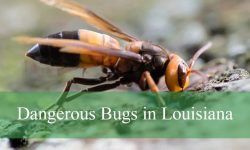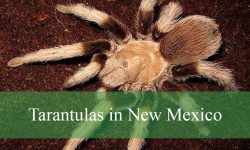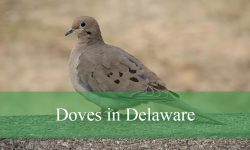If you’ve ever been out birdwatching in Illinois and spotted a small black bird with a white belly, you’re not alone. Many birders encounter this eye-catching color pattern and wonder which species it might be. Illinois is home to a variety of birds that display dark or black upperparts with clean white underbellies.
This contrast in plumage is not only beautiful but also functional — it helps birds blend into their surroundings while staying visible to potential mates. In this article, we’ll explore five small black birds with white bellies commonly seen in Illinois, including their identifying features, behavior, habitat, and tips to spot them in the wild.
Eastern Kingbird (Tyrannus tyrannus)
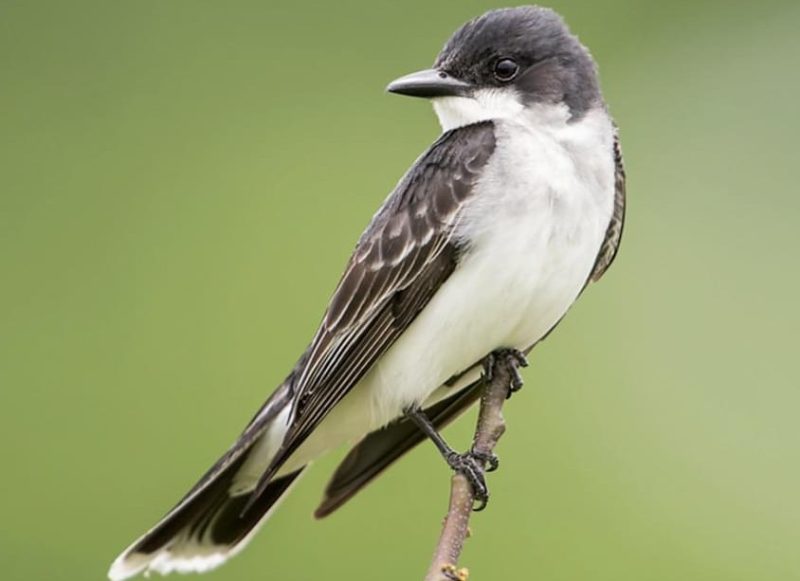
Description and Identification
The Eastern Kingbird is one of the most striking black-and-white birds you’ll find in Illinois. It features a black head, back, and tail, with crisp white underparts and a distinct white band at the tip of its tail. When perched, it gives a neat, tuxedo-like appearance.
Measuring about 7.5 to 9 inches long, the Eastern Kingbird has a robust body, broad wings, and a medium-length tail. Its sharp, slightly hooked bill and bold stance give it a commanding look. Males and females are similar in appearance, while juveniles tend to have slightly duller plumage.
Habitat and Behavior
In Illinois, Eastern Kingbirds are common summer residents. They prefer open areas such as meadows, pastures, farmland, and the edges of forests. You’ll often find them perched prominently on fences, wires, or branches, where they keep an eye out for flying insects.
These birds are expert aerial hunters. With quick and precise movements, they dart out to snatch insects mid-air before returning to their perch. They are also known for their territorial nature and will fiercely defend their nesting sites against larger birds like crows or hawks.
How to Identify It
Look for a dark bird perched in an open space, flicking its wings occasionally. The white tail tip is a key identification mark. During summer, listen for their sharp, buzzy “tzeer” calls echoing across fields and farmlands.
Downy Woodpecker (Dryobates pubescens)
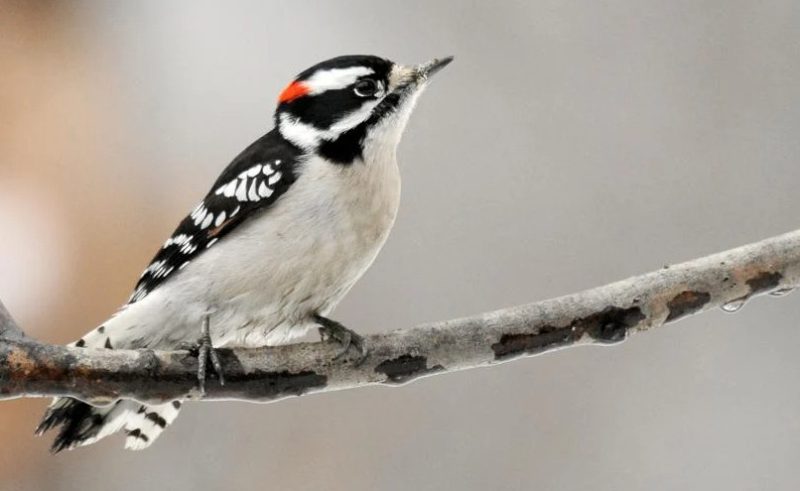
Description and Identification
The Downy Woodpecker is the smallest woodpecker in North America and one of the most common backyard birds in Illinois. Its black upperparts are patterned with white spots on the wings and a white stripe down the back. The underparts are pure white, giving it the classic “black above, white below” appearance.
Males have a tiny red patch on the back of their head, while females lack it. The Downy’s bill is short and dainty compared to other woodpeckers, making it look proportionally small.
Habitat and Behavior
This bird is a year-round resident throughout Illinois. You can find it in forests, wooded parks, and suburban areas with trees. It frequently visits bird feeders, especially those offering suet, sunflower seeds, or peanuts.
The Downy Woodpecker’s behavior is acrobatic — it hops up and down tree trunks and branches, probing for insects or larvae hidden in the bark. It may also drum on hollow trees or metal surfaces to communicate or mark its territory.
How to Identify It
Look for a small woodpecker with a white belly and spotted black wings. If you hear a sharp “pik” call followed by soft drumming, you’re likely near one. Downies are also known for their gentle, curious nature, often allowing close observation.
Hairy Woodpecker (Dryobates villosus)
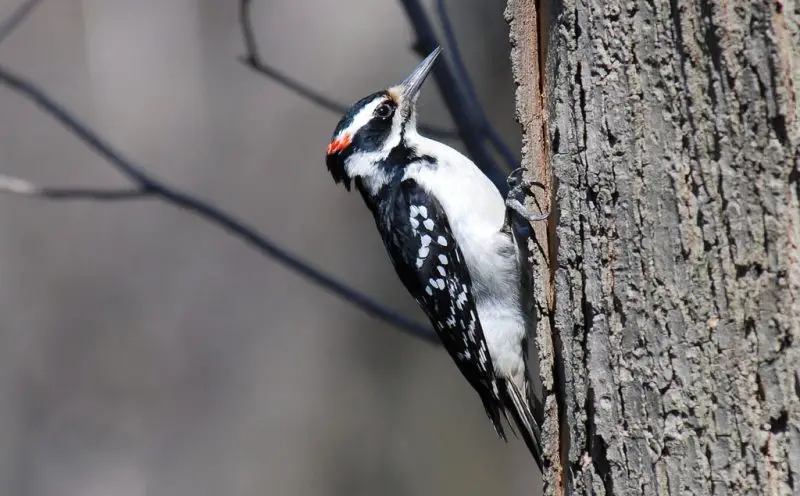
Description and Identification
The Hairy Woodpecker is closely related to the Downy but slightly larger — about 9 inches long. It has a very similar pattern of black upperparts, white underparts, and a bold white stripe down the back. Males have a red patch on the nape, while females do not.
One key difference is the bill length: the Hairy Woodpecker’s bill is long and sturdy, almost equal to the width of its head. This is the easiest way to distinguish it from its smaller cousin.
Habitat and Behavior
In Illinois, the Hairy Woodpecker is a common resident in forests and mature woodlots. It prefers taller trees than the Downy, often foraging higher in the canopy. However, it may also visit suet feeders during the winter months.
Hairy Woodpeckers feed primarily on beetle larvae and wood-boring insects. They chisel deep holes into bark, leaving rectangular marks behind. During breeding season, both males and females excavate nest cavities in dead or decaying trees.
How to Identify It
When you see a medium-sized black-and-white woodpecker with a long, chisel-like bill, chances are it’s a Hairy Woodpecker. It also produces a sharp “peek” call and a distinct, rolling drumbeat on trees.
Black-and-White Warbler (Mniotilta varia)
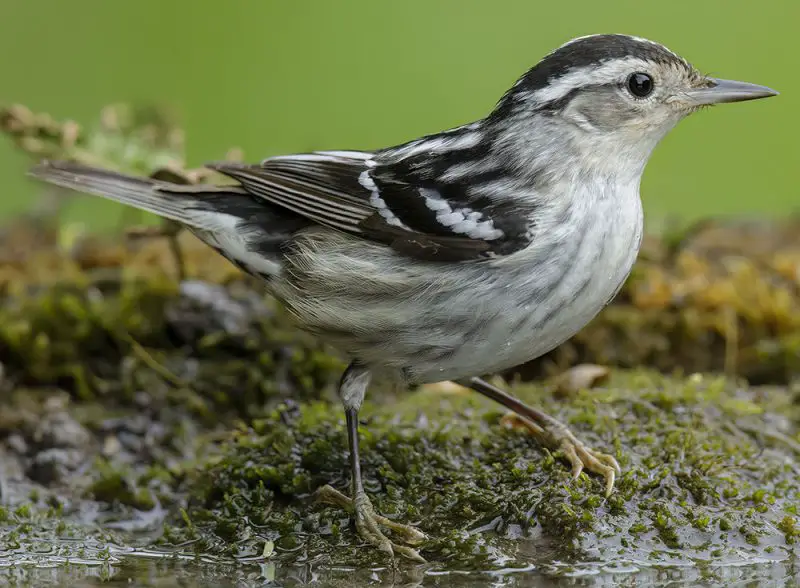
Description and Identification
The Black-and-White Warbler is a small, energetic songbird that perfectly fits the “black above, white below” pattern. It features black-and-white stripes across its head, back, and wings, with a clean white belly.
Unlike most warblers that flit among leaves, the Black-and-White Warbler creeps along trunks and large branches, behaving much like a nuthatch. Its bill is slender and slightly curved, ideal for probing under bark for insects.
Habitat and Behavior
This species is a common spring and fall migrant throughout Illinois and sometimes breeds in southern regions. It prefers deciduous forests, wooded parks, and tree-lined rivers.
During migration, these warblers can appear almost anywhere with mature trees. They are among the first warblers to arrive in spring, making them a delightful sight for early birdwatchers. Their song is a high-pitched, squeaky series of “wee-see, wee-see” notes that can help identify them even before they’re seen.
How to Identify It
Look for a small bird creeping up and down trunks with bold black-and-white stripes and a bright white belly. The male has a black throat, while the female’s is lighter. Their restless movement and contrasty plumage make them easy to recognize.
Eastern Phoebe (Sayornis phoebe)
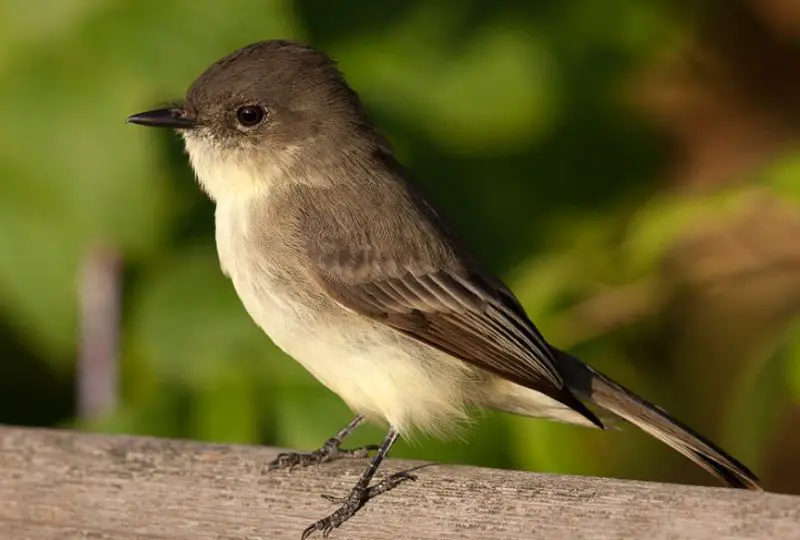
Description and Identification
The Eastern Phoebe is a small flycatcher with a dark gray-brown back and head that often appear blackish in poor light. Its underparts are bright white, creating a strong contrast. This combination gives it a simple yet elegant appearance.
Measuring around 6 to 7 inches long, the Phoebe has a plump body, rounded head, and a habit of flicking its tail downward repeatedly — one of its most reliable behavioral traits.
Habitat and Behavior
In Illinois, the Eastern Phoebe is a common migrant and summer resident, returning as early as March. It thrives near streams, lakes, forest edges, and rural buildings. This bird is famous for nesting on ledges, under bridges, or on beams of barns and porches.
Phoebes primarily eat insects, which they catch in midair or pick off surfaces. When perched, they sit upright on fences or branches, darting out swiftly to grab prey before returning to the same spot.
How to Identify It
Watch for a small, dark bird with a white belly that frequently wags its tail and gives soft “fee-bee” calls. The combination of its upright stance and habit of returning to the same perch makes it easy to spot and identify.
Why These Birds Are Often Confused
Many small birds in Illinois share a dark-over-light color scheme, so it’s easy to mistake one for another. For example, a distant Eastern Phoebe can look similar to a Kingbird, or a Downy Woodpecker might be confused with a Hairy Woodpecker. Lighting and distance often affect how “black” a bird appears.
To avoid confusion, pay attention to three main factors:
- Size and shape – Woodpeckers have strong bills and stiff tails, while flycatchers are sleeker with upright postures.
- Tail patterns – Look for tail tips or outer feathers that may have white patches.
- Behavior – Phoebes wag their tails, Kingbirds sally out after insects, and woodpeckers cling vertically to trees.
Birdwatching Tips in Illinois
1. Choose the Right Locations
Illinois offers diverse habitats for birdwatching. Open fields and rural roads are perfect for spotting Eastern Kingbirds, while wooded parks and nature preserves attract Downy and Hairy Woodpeckers. The Black-and-White Warbler and Eastern Phoebe are best observed near forests and streams.
2. Visit During Active Seasons
Most small black birds with white bellies are active from spring through fall. The Kingbird and Phoebe migrate south in winter, while the woodpeckers stay year-round. Early morning and late afternoon are the best times to observe feeding and singing activity.
3. Bring Binoculars and a Field Guide
A pair of 8×42 binoculars will help you see field marks like the white tail band of a Kingbird or the small red patch on a Downy Woodpecker. A regional bird guidebook or birding app can help confirm your observations on the spot.
4. Use Bird Feeders and Water Sources
If you want to attract these birds to your yard, install suet feeders, mealworms, and birdbaths. Downy Woodpeckers are frequent feeder visitors, and Eastern Phoebes may nest nearby if they find safe ledges and ample insects.
5. Learn Bird Calls
Each of these species has a distinct call or song:
- Eastern Kingbird – sharp, electric “tzeer” sounds.
- Downy Woodpecker – high-pitched “pik” notes.
- Hairy Woodpecker – sharper “peek” with louder drumming.
- Black-and-White Warbler – high “wee-see” song.
- Eastern Phoebe – two-syllable “fee-bee” call.
Recognizing these sounds will help you identify them even when they’re hidden among trees.
Summary Table
Bird Species |
Key Identification |
Habitat |
Season in Illinois |
|---|---|---|---|
Eastern Kingbird |
Black head, white belly, white tail tip |
Open fields, fence lines, near water |
Summer |
Downy Woodpecker |
Black wings with white spots, white belly, small size |
Woodlots, parks, backyards |
Year-round |
Hairy Woodpecker |
Larger size, long bill, white stripe on back |
Mature forests, large trees |
Year-round |
Black-and-White Warbler |
Black and white stripes, white belly, creeps on trunks |
Forests, woodlands |
Migrant |
Eastern Phoebe |
Dark gray-brown above, white belly, tail flicking |
Streams, bridges, rural buildings |
Spring–Fall |
Common Mistakes When Identifying Birds
- Lighting Effects: Birds may appear darker or lighter depending on the sun’s position. Always observe from multiple angles.
- Juvenile Plumage: Young birds often have duller or browner tones that differ from adults.
- Overlapping Ranges: Some birds, like the Eastern Phoebe and Kingbird, share similar habitats in spring. Watch their behavior to distinguish them.
Remember that even experienced birders rely on multiple field marks — color alone can be misleading.
How These Birds Benefit the Illinois Ecosystem
Each of these black-and-white birds plays a vital ecological role:
- Kingbirds and Phoebes control insect populations, especially mosquitoes and flies.
- Woodpeckers keep trees healthy by eating wood-boring insects.
- Warblers help balance forest ecosystems by consuming small pests.
Encouraging these birds to thrive supports biodiversity and helps maintain natural pest control across Illinois landscapes.
Final Tips for Bird Lovers
- Bring a camera: Photographing birds not only helps with identification but also adds joy to your birding experience.
- Stay quiet and patient: Sudden movements can scare birds away.
- Join local birding groups: Illinois has many Audubon chapters and nature clubs that host bird walks and identification workshops.
- Log your sightings: Apps like eBird allow you to track species and contribute valuable data to conservation efforts.
FAQs About Small Black Birds with White Bellies in Illinois
What is the most common small black bird with a white belly in Illinois?
The Downy Woodpecker is the most common year-round resident that fits this description. It’s frequently seen at backyard feeders and woodlots.
Which of these birds migrates out of Illinois for winter?
Both the Eastern Kingbird and the Eastern Phoebe migrate south to Central and South America during winter months.
Can these birds be attracted to backyards?
Yes! Providing suet, mealworms, and clean water can attract Downy Woodpeckers and sometimes Eastern Phoebes. Kingbirds prefer open fields but may visit large yards near farmlands.
Are any of these birds endangered in Illinois?
No, all five species listed are stable and not considered threatened in Illinois. However, maintaining healthy habitats and reducing pesticide use help support their populations.
How can I tell the difference between a Downy and Hairy Woodpecker?
The Hairy Woodpecker is larger and has a much longer bill. The Downy’s bill is short and delicate, roughly one-third the width of its head.
Conclusion
Illinois is a wonderful place for birdwatching, and the contrast of black upperparts and white bellies is one of the easiest patterns to spot in the field. The Eastern Kingbird, Downy and Hairy Woodpeckers, Black-and-White Warbler, and Eastern Phoebe each display unique beauty and fascinating behaviors.
Whether you’re exploring a forest trail, sitting by a riverbank, or observing from your backyard, keep your binoculars handy — one of these delightful black-and-white birds may be closer than you think.


